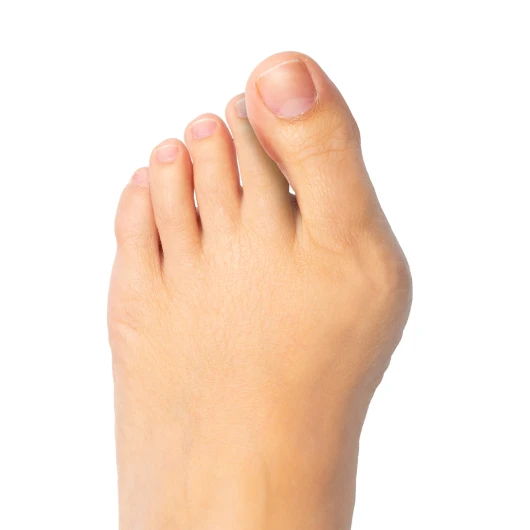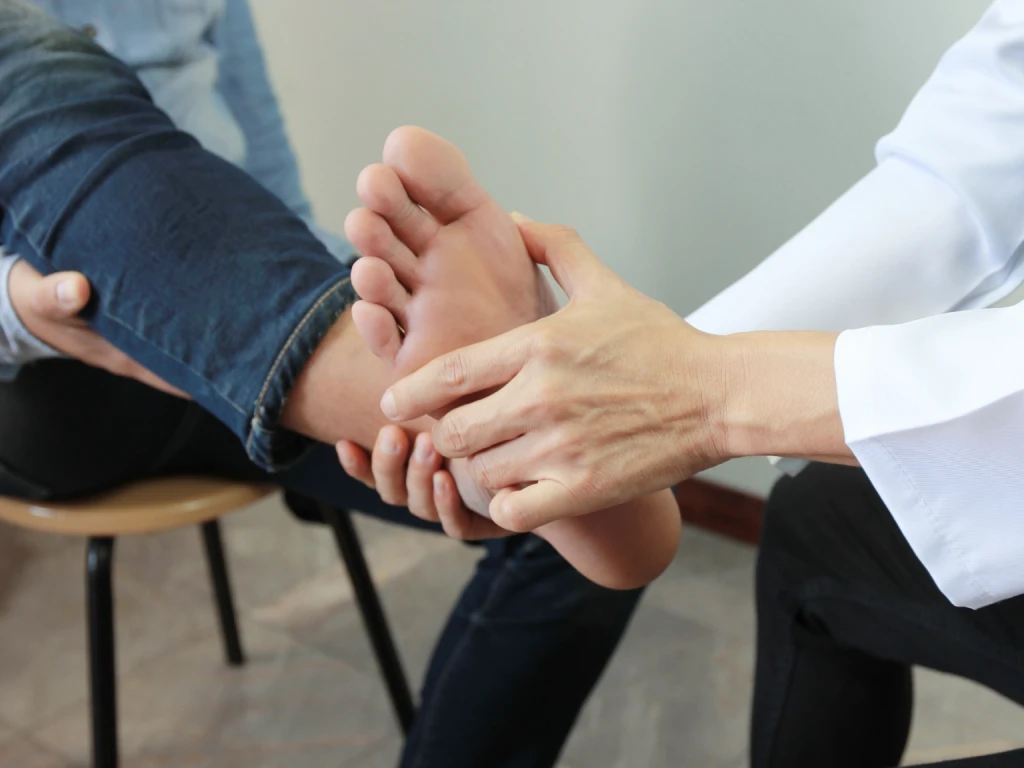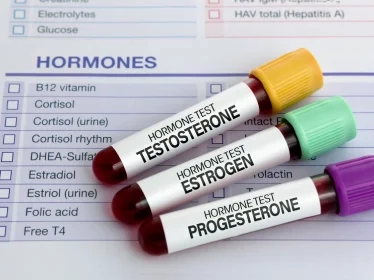
As the year-end season approaches in Singapore, calendars fill with weddings, festive gatherings, and long-awaited celebrations. It is a time when many of us bring out our most stylish footwear. Sleek heels, stiff leather shoes and narrow dress styles all look great but may not offer much support.
For those with bunions, however, this can also be the season when foot pain takes centre stage. The familiar bump at the base of the big toe, known medically as hallux valgus, often becomes more noticeable and uncomfortable after long hours of standing or walking in less supportive shoes.
While it may feel like just another inconvenience, bunions are more than a cosmetic issue. Understanding what they are and how they progress is the first step towards protecting your long-term mobility.
Bunions Aren’t Just a Bump
A bunion forms when the big toe joint shifts inward, gradually pushing the joint at its base out of alignment. Many people think of bunions as a surface problem, but they are actually the result of deeper structural changes in the foot.

Over time, the misalignment can lead to:
- Ongoing bunion pain and increasing deformity of the big toe joint
- Stiffness and reduced movement
- Secondary changes such as overlapping toes or calluses, pain and inflammation in the adjacent toes due to transferred load
Although bunions often develop slowly, they rarely stay the same. Without support, the misalignment may worsen, especially with prolonged pressure from narrow footwear or long hours on your feet.
Some people also wonder whether their symptoms could be due to gout or a bunion. While both can cause swelling at the big toe joint, gout tends to come on suddenly and is linked to uric acid buildup. Bunions, on the other hand, usually worsen over time and are more commonly triggered by joint structure and lifestyle factors.
Living with Bunions: What You Can Do
Whether you’re heading to a year-end celebration or getting through a regular workday, there are things you can do to feel more comfortable and reduce the chances of the bunion getting worse.
Choose the Right Shoes
Opt for shoes with a wider toe box, soft materials, and good arch support. Narrow or high-heeled shoes are best kept for short occasions.
If you are wearing heels for a celebration or formal event, look for styles with lower heel heights, cushioned insoles or ankle straps for added support. For men, stiff leather dress shoes or narrow formal footwear can also increase pressure around the bunion. Choosing styles with softer materials, wider fits or padded soles may help ease discomfort during long events.
You can also limit standing time, plan seated breaks or alternate with flats to ease pressure on your feet throughout the evening.
Fortunately, shoes designed for bunion support are now easier to find in Singapore, and many combine comfort with a more stylish look than before.
Add Gentle Support
Gel cushions or sleeves can reduce rubbing and relieve pressure during busy days.
These can be especially helpful if you need to wear dress shoes or heels for an event, as they add a layer of comfort over the bunion and reduce direct pressure from tighter footwear.
If you're attending an event, consider slipping a spare pair of flats into your bag.
Stretch and Strengthen
Exercises that target the foot and ankle, such as towel curls or toe stretches, can help support the surrounding muscles and improve how you walk.
And if the discomfort starts affecting more than just your shoes, especially when it starts to feel like your feet are getting in the way of daily life, it may be time to explore what long-term care looks like.
When to Take the Next Step
It is natural to put off dealing with bunions, especially if you can still walk or exercise. But ignoring them often means they progress quietly in the background. By the time pain becomes constant, daily activities may already be affected.
Here are a few signs it might be time to speak with someone:
- You’ve started avoiding certain shoes altogether
- Pain lingers even after rest
- You’re unsure whether it’s gout or a bunion
- The bump seems to be growing or the toe shifting more
- Your usual walks or workouts feel harder than before
While splints, pads, or even a bunion corrector can offer some temporary relief, they cannot reverse the joint deformity. That is why longer-term guidance matters. It is not about jumping into treatment, but about understanding your options and preventing further progression.
What Orthopaedic Support Looks Like

While footwear and lifestyle changes provide short-term relief, only a proper medical evaluation can determine the best long-term approach. Bunions often reflect a deeper issue with foot and ankle alignment, and early care can help prevent further deformity and protect mobility.
Orthopaedic doctors assess how the bunion affects your foot structure, joint health and walking mechanics. This helps guide the right next steps, whether your condition is mild or more advanced.
Depending on your needs, care may include:
A clear diagnosis
Your doctor will determine whether you are dealing with hallux valgus, arthritis, or another condition such as gout that can mimic bunion symptoms. This ensures treatment is focused on the right issue from the start.
Guidance on prevention and support
You will receive practical advice on how to prevent progression, along with footwear recommendations or custom orthotic insoles to improve alignment and comfort.
Monitoring over time
Bunions can change over time. Monitoring your condition helps track joint mobility, detect early signs of arthritis and ensure that your treatment continues to meet your needs.
Surgical options when needed
If the bunion has progressed or the pain is significantly affecting your mobility, bunion surgery may be considered. Your doctor will assess this based on your symptoms, lifestyle and imaging findings.
If surgery becomes part of your care plan, modern techniques including minimally invasive options can realign the joint with shorter recovery times and reduced discomfort.
Your doctor will walk you through each option to find the approach that best supports your daily function and long-term wellbeing.
Taking the Next Step Towards Comfort
Festive gatherings and special occasions should be about enjoying the moment, not counting the hours until you can take your shoes off. If bunion pain is starting to interfere with your lifestyle, it may be time to understand what support is available.
Speak to an orthopaedic doctor at Island Orthopaedics to better understand what is causing your discomfort and explore what options may help. This could include making simple adjustments to your routine or considering treatment to prevent things from getting worse.
This season, don’t let bunions decide your choice of footwear. With the right care, you can continue moving comfortably and confidently, both during the festivities and beyond.




